Discover financial empowerment resources
Discover financial empowerment resources
Interpreting the data: Key takeaways from Welfare in Canada, 2023. For nearly 40 years, the annual Welfare in Canada series and its predecessors have documented the depth of poverty that persists for people receiving social assistance. The 2023 edition builds on this work to provide a...
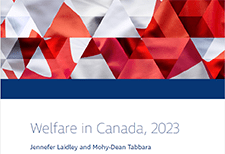
The Welfare in Canada reports look at the total incomes available to those relying on social assistance (often called “welfare”), taking into account tax credits and other benefits along with social assistance itself. The reports look at four different household types for each province and...

Maytree recently published the latest count of social assistance recipients in Canada. Learn how many people in each province or territory were receiving social assistance in 2022-23, and how those numbers have changed over...
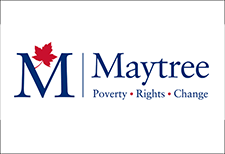
The Welfare in Canada reports look at the total incomes available to those relying on social assistance (often called “welfare”), taking into account tax credits and other benefits along with social assistance itself. The reports look at four different household types for each province and...
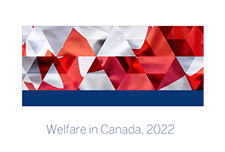
Using data provided by provincial and territorial government sources, Welfare in Canada, 2021 describes the components of welfare incomes, how they have changed from previous years, and how they compared to low-income thresholds. Access the report here. During the launch event, the report’s...
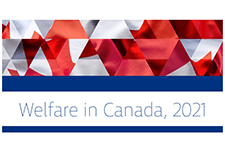
The Social Assistance Summaries series tracks the number of recipients of social assistance (welfare payments) in each province and territory. It was established by the Caledon Institute of Social Policy to maintain data previously published by the federal government as the Social Assistance...
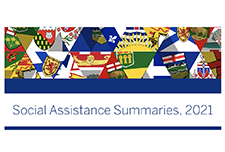
In 2020, the federal government spent over $160 billion on COVID-19 pandemic response measures. These expenses were critical in supporting recently unemployed workers and affected businesses in a time of uncertainty. However, supports through programs like the Canada Emergency Response Benefit...

This report presents the findings of extensive research about employable singles on social assistance undertaken by Toronto Employment and Social Services, in partnership with the Ontario Centre for Workforce Innovation. Drawing on data from 69,000 singles who were receiving social assistance in...

The Social Assistance Summaries series tracks the number of recipients of social assistance (welfare payments) in each province and territory. It was established by the Caledon Institute of Social Policy to maintain data previously published by the federal government as the Social Assistance...

These reports look at the total incomes available to those relying on social assistance (often called “welfare”), taking into account tax credits and other benefits along with social assistance itself. The reports look at four different household types for each province and territory....
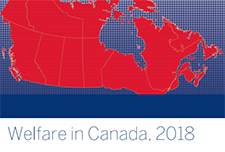
People living on low incomes have historically been excluded from politics and policy debates, even when the question at hand is how poverty can be reduced or its impacts mitigated. The aim of this research was to explore how people on low incomes perceive politics, understand how far they feel...
This is a report on child poverty in British Columbia and connections to the working poor, employment insecurity, living on low incomes, and gives policy recommendations to respond to this...
This handbook is a guide to the legal system for women in Ontario who are in abusive relationships. The legal system is constantly changing. Each situation is unique and requires different solutions. For legal advice about your situation, you should speak with a...
Many public benefit programs – such as cash welfare and Medicaid – limit eligibility to those with few or no assets. If individuals or families have assets exceeding the state’s limit, they must “spend down” longer-term savings in order to receive what is often short-term public...
These are the webinar slides from the CFED webinar on asset limits and savings possibilities for Americans on social assistance. The webinar highlights findings from 3 research studies that explore asset limits and household financial security; discusses policy changes to asset limits and their...
This paper is the text of an address delivered by Sherri Torjman at the conference Welfare Re-form: The Future of Social Policy in Canada held on October 24 and 25, 2013, in Regina. The conference was sponsored by the Johnson-Shoyama Graduate School of Public Policy at the University of...
The rise of economic inequality has become a staple of policy debates and stump speeches. Less visible is the way the rise has altered the landscape of America’s urban neighborhoods. Two books should help change that. Matthew Desmond, an urban sociologist at Harvard, has delivered a jolt with...
Asset Building for low–income people through matched savings challenges the focus of traditional poverty-alleviation strategies on income support to enable the poor to escape from poverty and improve their economic and social status. It does not deny the necessity nor the benefits of such support...
Poverty is costing us too much. The National Council of Welfare provided examples in its 2002 report on the Cost of Poverty. In 2006, in Solving Poverty: Four Cornerstones of a Workable National Strategy for Canada, we outlined a governance model based on long-term vision, plans and budgets,...
In this paper we seek to determine the effect of assets held in early adult life on later outcomes. We specifically look at wages, employment prospects, general health and malaise. We employ a number of statistical techniques in our search for the causal effect of assets on adult health and...
This paper has two purposes. First, it documents the historical context of MINCOME, a Canadian guaranteed annual income field experiment (1974 to 1979). Second, it uses routinely collected health administration data and a quasi-experimental design to document an 8.5 percent reduction in the...
We investigate changes in monthly income volatility in non-elderly households in the U.S. since the early 1990s. Using the Survey of Income and Program Participation (SIPP), we find that monthly income volatility is highest for lower income households, and that it increased substantially for these...
Assigned the task of studying social conditions in Canadian cities, the Standing Senate Committee on Social Affairs, Science and Technology‘s Subcommittee on Cities chose to begin with people whose lives in those cities are marginalized by poverty, housing challenges and even homelessness. The...
